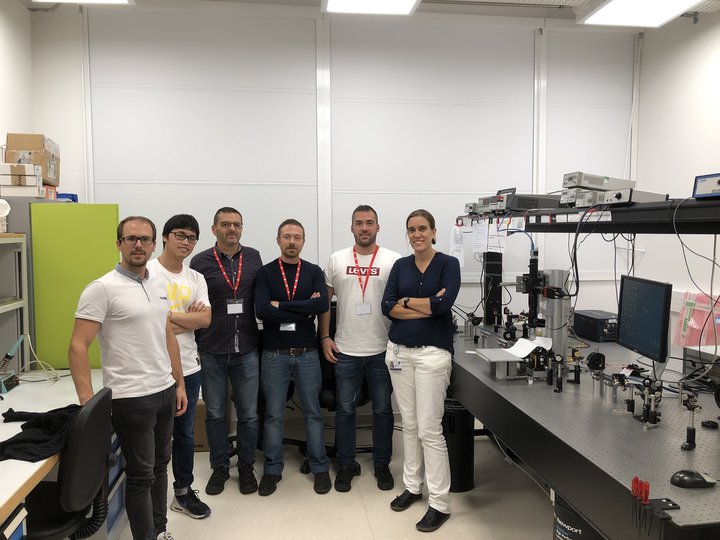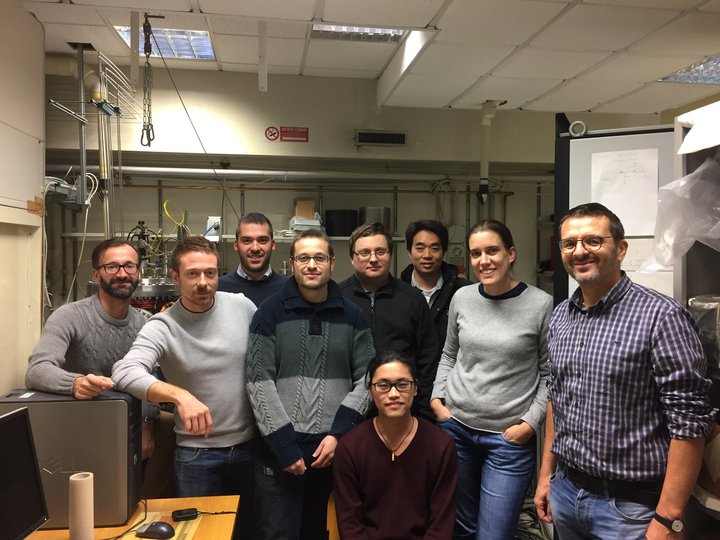
Partners
Université Paris Sud/CNRS : Centre de Nanosciences et de Nanotechnologies (C2N)
Politecnico Di Milano / L-Ness
Resume
Mid-infrared (mid-IR) spectroscopy is a nearly universal way to identify chemical and biological substances, as most of the molecules have their vibrational and rotational resonances in the mid-IR wavelength range. The development of mid-IR photonic circuits on silicon chips has recently gained a lot of attention, as it could offer high performance, low cost, compact, low weight and power consumption photonic circuits. Among the different materials available in silicon photonics, germanium (Ge) and silicon-germanium (SiGe) alloys with a high Ge concentration are particularly interesting because of the wide transparency window of Ge extending up to 15 µm. In this context, the INsPIRE project aimed at demonstrating breakthrough in the field of mid IR photonic integrated circuits based on Ge-rich SiGe materials. The main achievements obtained during the project are described below:
(i) It has been demonstrated that the Ge-rich graded SiGe platform relying on a graded SiGe layer epitaxially grown on Si substrate, presents definitive advantage in terms of mid-IR photonics platform, as a single waveguide can be used with low propagation losses in an unprecedent wavelength range, up to 11 μm, for both TE and TM polarization.
(ii) A whole set of devices has been demonstrated based on this waveguide platform: Optical spectrometers working in the a wide mid-infrared spectral range have been developed using a classical Fourier-transform approach, leading to the first on-chip spectrometer working from 5 to 8.5 µm wavelength. A new spectrometer has then been proposed to overcome the trade-off between bandwidth and resolution of classical approaches. To this end, the spatial heterodyning of Mach Zehnder interferometers (MZI) arrays is combined with optical path tuning by thermooptic effect. A mid-infrared SiGe spectrometer was then demonstrated with a resolution better than 15 cm-1 and a bandwidth of 603 cm-1 near 7.7 m wavelength with a 10 MZI array. Finally resonators have been investigated in different configurations, based on racetrack devices and Bragg grating based Fabry-Perot cavities corresponding to the first integrated resonators reaching 8 µm wavelength.
(iii) Active devices is among the main challenges to complete a mid-IR photonics platform. As a preliminary step towards the implementation of a high-performance integrated modulator in the mid-IR regime, all-optical modulation has been demonstrated. This first experimental demonstration of optical modulation in a mid-IR PIC, carried out in long wave infrared (LWIR) regime, confirms theoretical free-carrier electro-absorption predictions and paves the way for efficient electrically driven optical modulators.
(iv) The last objective of the project was to make key advances in the development of chip scale wideband sources based on non-linear (NL) effects in Ge-rich SiGe materials. The first 3rd order NL experimental characterization of Ge-rich Si1-xGex waveguides has thus been performed, with Ge concentrations x ranging from 0.7 to 0.9. The characterization performed using a bi-directional top hat D-Scan method, at 1580 nm has been compared with theoretical models and used to model NL properties of Ge-rich SiGe materials in the mid-IR. A strong increase of the non-linear refractive index when the Ge concentration is larger than 80% is thus obtained, confirming the key advantages of using Ge-rich SiGe materials for efficient non-linear devices.
The team:

INsPIRE team - Sep. 2019 From left to right : M. Montesinos-Ballester, Qiankun Liu , Giovanni Isella, Jacopo Frigerio, Andrea Ballabio, Delphine Marris-Morini

INsPIRE team - Oct. 2016 From left to right : Daniel Chrastina, Jacopo Frigerio, Andrea Ballabio, Joan Manel Ramirez, Vladyslav Vakarin, Papichaya Chaisakul, Delphine Marris-Morini, Giovanni Isella, and seated in front : Qiankun Liu
Publications
Articles in journals
Invited communications in international conferences
Communications in international conferences